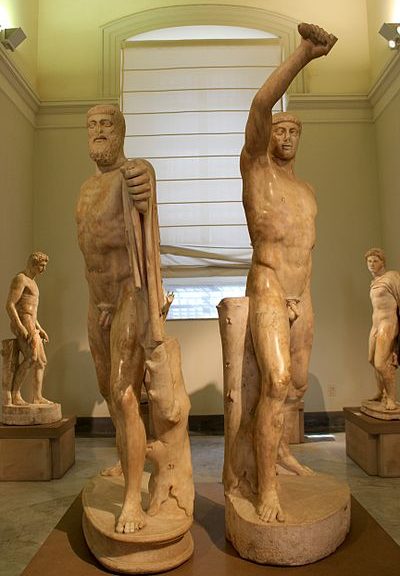Artist: Muhammad Qasim
Media: Miniature Ink and paint illustration
Date and location: 1627 in the Persian Empire (Now Iran)
Where can I find this artwork?: The Louvre in Paris France in Islamic Art: The Modern Empires (1500–1800)

Significance to Queer Art History
This miniature illustration depicts Shah Abbas I of Persia and his page boy interacting and sharing wine. The imagery is soft and intimate as the page holds the wine flask erect towards the Shah’s crotch and almost embraces him. In Islam, sex was a positive thing. Sex between men was even held as a “spiritual bliss”, albeit not officially condoned. The small Arabic lettering on the right hand side gestures at the bliss of wine and lovers, reading:
“May life provide all that you desire from three lips: those of your lover, the river, and the cup.”
All three of these things may be featured if the tree setting is in fact, near a river. This illustration also brings forward an allusion to the Qur’an’s view of paradise with all the blisses of life from the poem in tact.
Resource(s)
Parkinson, R.B. A Little Gay History: Desire and Diversity Across the World. London: The British Museum Press, 2013, 73.
Saslow, James M. Pictures and Passions: A History of Homosexuality in the Visual Arts. New York, NY: Viking, 2000. 146-147.
Summers, Claude J. “Erotic Miniature Painting.” In The Queer Encyclopedia of the Visual Arts. San Francisco: Cleis Press, 2004.
“Work Shah Abbas I and His Page.” Louvre Museum | Paris. Accessed August 11, 2017. http://www.louvre.fr/en/oeuvre-notices/shah-abbas-i-and-his-page.
Transparency note: This page was reformatted to match later posts, the name of the artist was added, the spelling of Qur’an was changed from ‘Koran’ in keeping with current practice, and the resource A Little Gay History was added by Baylee Woodley on March 11, 2022.





















